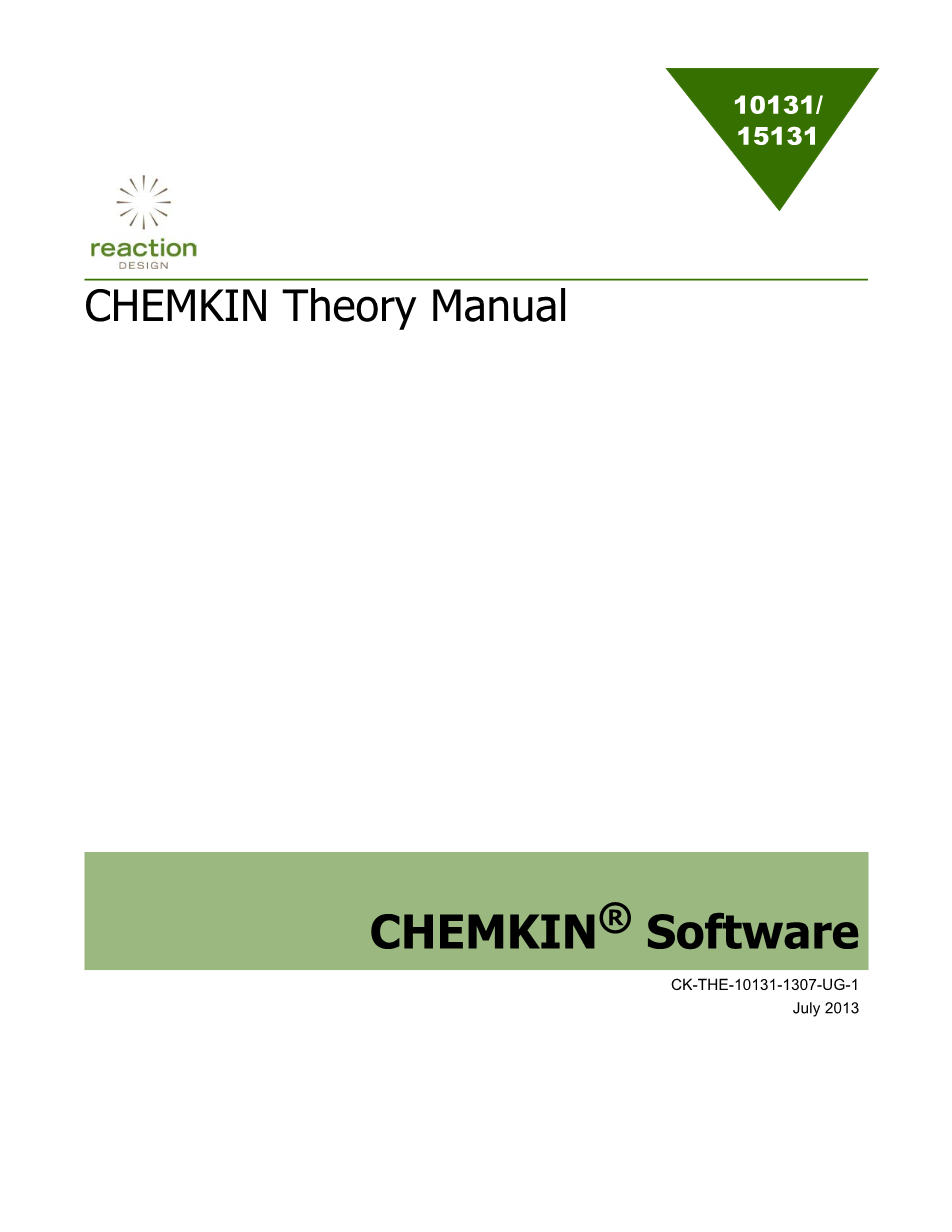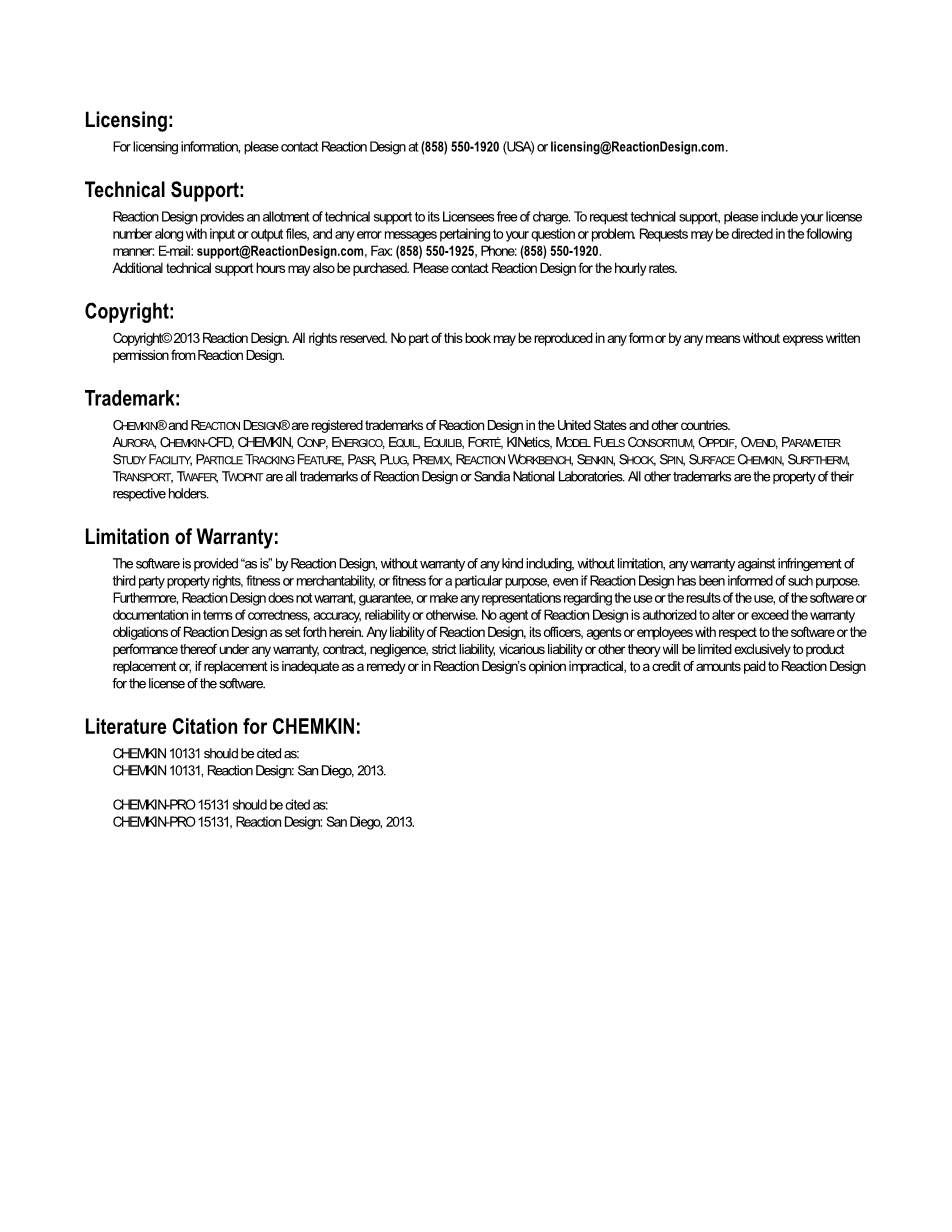模式下天然气发动机燃烧过程分析外文翻译资料
2021-12-21 22:31:20
|
8.3.9 Treatment of Activities for Bulk Species The net gas-phase chemical production rate of each species, ,results from the competition between all the chemical reactions involving that species. For reactions stated as reversible in the GAS-PHASE KINETICS and SURFACE KINETICS input files, the reverse rate parameters can be determined from the forward rate coefficients and the thermodynamic properties of the species involved in the reaction, via the law of mass action. In these cases, SURFACE KINETICS requires activities to be defined for bulkphase species, in order to determine the species thermochemistry. In these reactor models, the program sets the bulk activities,,equal to their mole fraction in the bulk phase: Equation 8-39
More details regarding chemical reaction specifications, reaction-rate determinations, and thermochemical properties, are available in Chapter 3 and Chapter 4. 8.4 Internal Combustion Engine Model An Internal Combustion Engine model simulates a combustion cylinder in an internal combustion (IC) engine under auto-ignition conditions, most relevant to the study of fuel auto-ignition behavior, engine knock, and homogeneous charge compression ignition (HCCI) engines. Heywood46 provides equations that describe the volume (to first order) as a function of time, based on engine parameters, including compression ratio, crank radius, connecting rod length, speed of revolution of the crank arm, and the clearance or displaced volume. These equations are described briefly below. The engine parameters are specified by the user directly in the CHEMKIN Interface for the Internal Combustion Engine Reactor Model. Figure 8-6 Schematic of an engine cylinder
|
8.3.9各组分物质活动的处理 各组分气相化学净产率,· k ,是由涉及该物种的所有化学反应之间的竞争引起的。对于气相动力学和表面动力学中可逆的反应,反速率参数可以根据质量定律中的前向速率系数和反应所涉及的物种的热力学性质来确定。在这些情况下,表面动力学需要为膨胀相物种定义活性,以确定物质热化学。在这些反应器模型中,程序设定本体活性,,等于它们在体相中的摩尔分数: 式8-39
关于化学反应规范、反应速率测定的更多细节、热化学性质,见第3章和第4章。 8.4内燃机模型 内燃机模型模拟了内燃机在自燃条件下的燃烧室,与燃料自燃行为、发动机爆震和均质压燃(HCCI)发动机的研究最为相关。Heywood46提供了根据发动机参数(包括压缩比、曲柄半径、连杆长度、曲柄臂转速以及间隙或位移量等)将体积(到一阶)描述为时间函数的方程式。下面简要介绍这些方程。发动机参数由用户直接在内燃机反应器模型的Chemkin界面中定义。 图8-6发动机气缸示意图
|
|
For the time-dependence of the engine cylinder volume, consider the diagram in Figure 8-6. The connecting rod length is given by LC , while the crank arm radius is given by LA . The volume swept by the piston (cross-hatched area) is represented by the dashed rectangle above the piston. The clearance volume Vc is represented by the open areas above and below the swept volume. The maximum swept or displaced volume is given by: Equation 8-40
Where D is the cylinder bore diameter as shown in Figure 8-6. The engine compression ratio is defined as the ratio C of the maximum total volume to the clearance volume, Equation 8-41 Compression Ratio
Note that in some cases it is only necessary to define the compression ratio, and it is not strictly necessary to define the clearance volume, since it is only used to scale the calculated volume. However, if the user is interested in performing post-analyses for engine efficiency, for example, or in the case that the IC Engine heat transfer coefficient correlation is used, the clearance volume should be specified with a physical value. By default, a value of 1.0 is assumed. The other parameter required for the IC engine problem is , the ratio of the connecting rod length to the crankarm radius : |
对于发动机气缸容积的时间相关性,考虑图8-6中的图表。连杆长度由LC表示,曲柄臂半径由LA表示。活塞扫掠的体积(交叉阴影区域)由活塞上方的虚线矩形表示。净空体积由扫掠体积上下的开阔区域表示。最大扫掠或位移体积由以下公式给出: 式8-40
式中,D为气缸孔径,如图8-6所示。发动机 压缩比定义为最大总容积与间隙容积之比C, 式8-41 压缩比
注意,在某些情况下,只需要定义压缩比,而不必严格定义间隙体积,因为它只用于衡量计算体积。但是,如果用户有兴趣对发动机效率进行后处理,例如,或者在使用内燃机传热系数关联式分析的情况下,应使用物理值指定间隙体积。默认情况下,假定值为1.0。IC发动机问题所需的另一个参数是连杆 长度LC与曲柄臂半径LA之比: |
|
Equation 8-42 Ratio of Connecting Rod to Crank-arm Radius
Finally, the user must specify the rotation rate of the crank arm, where Equation 8-43
With these definitions, one can derive the relationship between the total volume available for combustion in the cylinder as a function of time, scaled by the clearance volume:46, our p. 148 Equation 8-44
while the time derivative of the volume is: Equation 8-45 Equation 8-40 through Equation 8-45) provide the volume and volume-derivative functions of time, which allows solution of the general equations for species and energy conservation discussed in Section 8.3.
|
式8-42连杆与曲柄臂半径之比
最后,用户必须指定曲柄臂的转速,其中 式8-43
根据这些定义,我们可以得出气缸内可供燃烧的总体积与时间的函数关系,用间隙体积表示:(46,第148页。) 式8-44 其中体积的倒数是时间 式8-45 方程式8-40到8-45给出了体积以及体积对时间求导计算信息,可用于求解8.3节中的物质与能量守恒方程。
|
|
8.4.1 Heat-transfer Options for the IC Engine Model An additional option to the Internal Combustion Engine model is specification of convective heat loss from the gas to the solid walls during the compression and expansion cycle. The heat loss is calculated at each point in time according to: Equation 8-46
where the user specifies Twall and the heat transfer coefficient, h , is obtained from the following generalized heat transfer correlation46,our p.148 based on user-specified constants a , b , and c : Equation 8-47 Form of the IC Engine
Nuh is the Nusselt number for heat transfer,Re is the Reynolds number, and Pr is the Prandtl number. These are defined according to: Equation 8-48 Nusselt Number Definition
Equation 8-49 Reynolds Number Definition Based on Piston |


英语原文共 402 页
资料编号:[4021]




